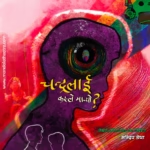I have been a regular theatregoer in Kathmandu for a decade and a theatre reviewer for half a decade. In the past couple of years, I have also flirted with the praxis of theatre as a translator and writer of scripts. Being involved with Nepal theatre in various ways, I am tempted to reflect on the goings-on in the theatre scene and pose a question or two to my colleagues and myself.
As a novice consumer of plays, I used to devour what was available to me in theatres across Kathmandu Valley. For me, content was king. However, over time, I got exposed to other theatrical forms and elements and started looking for them in Nepali theatre. Sadly, I found only a few directors exploring these territories. As an insider in the industry, I understand certain obligations of the producers and directors to deliver plays that cater to the “tastes” of the audience. But I often find junk humor, clichéd dialogue, and outdated prop designing being rehashed and presented to the audience.
However, theatre practitioners need to be more experimental and find new ways to expand the intellectual horizon of plays even while retaining the aspects that cater to the libidinal. An example of such a play is Rio, one of the entries of the Nepal International Theatre Festival (NITFest). This Uruguayan play by Andrés Fagiolino and Betina Dominguez dealt with the serious issue of the water crisis through the masterful use of fun elements. During the performance, the actors broke the fourth wall, used empty cups gathered from several countries signifying the global water crisis, and used extreme physical movements inspired by circus acts. The play kept the audience engaged while giving ample space for further intellectual discourse. There are some more plays performed in Nepal that I have found to be intellectually stimulating while also experimenting with the form. I would like to write about three such plays here.
Young Indian actor/director Deepika Arwind’s ‘I am not Here’ was set in a boxing ring, having the audience on all four sides of the performance space. Though it was set in a boxing ring, the content was not about boxing, rather it was about everyday issues faced by women. That contradiction in setting and the content symbolized the women’s everyday hustle being no less than in a boxing ring every day. The director also deviated from conventional playwriting by including random quotes from newspapers against feminism, which made the play more contemporary.
‘Jokhana’ by Nepali director Kiran Chamling was set against the backdrop of the 10-year armed conflict in Nepal. The play’s protagonist returns home after his family has completed his death ritual. But apart from this gripping story, the play had several thought-provoking elements. It showed boots of state and rebel soldiers that were being worn by guns. The gun-shoes paraded against each others, showing how war minimizes humans into merely insignificant non-human objects, like guns and boots. This minimalistic but thematic treatment of props elevated the play.
‘Sabiti’ by director Bimal Subedi used theatre space and props brilliantly. I was awestruck by its design and direction when I saw it for the first time in Jammu, India. A rebellious female character who is declared an anarchist is trapped within a frame of sands, symbolizing societal restrictions. To show how power infiltrates into the livelihood and health of society, the protagonist is always given saline, which they can easily control. The two characters who control everything in society keep changing their faces and also control the lights and music on the stage.
These performances and treatments gave me reasons to remember them. They made me realize that I like plays that are political to the very core, blending the form and the content masterfully, and initiating discussions. I enjoy plays that make me think while going back home from the theatre. Be it ‘12 Durbasa’ by Rajan Khatiwada or ‘Vagina Monologues’ by Akanchha Karki, ‘Mimamsa’ by Prabin Khatiwada or ‘Bathtub’ by Ghimire Yuvraj, ‘Mahabhoj’ by Anup Baral, ‘Milk Tea’ by Sulakshyan Bharati, or ‘Upiyako Nibanda by Kedar Shrestha, I loved these plays, with some reservations, because they had strong political purpose while maintaining the theatrical aesthetics.
Due to the successful operation of half a dozen theatres inside the Kathmandu Valley and the rise in the number of theatre groups, there has been a spike in the number of theatre productions. But as a viewer, I am a little worried about the kind of productions I happened to see in recent times. Sadly, a few of them made me feel my money was wasted. Except for ‘The Wedding Album’ by Akanchha Karki, ‘Hiun Bhanda Chiso’ by Som Nath Khanal, ‘Euta Sapana Ko Awasan’ by Anup Baral, ‘Bimokshya’ by Prabin Khatiwada (of course with sharp critical reservations) and few others, I found many plays repetitive in terms of storytelling, ways of presentation and use of other elements like lighting, props, and other.
Many of them were half-cooked, with little clarity on the motivation of the directors. Some seemed to be made in a hurry, maybe because they were student or donor-funded productions, and some had the tell-tale problems of bad productions, lacking the basic touch of professional theatre presentation. I am not against newcomers directing plays or students coming up with productions. But the least they can do is go for peer-reviewing, a fundamental process in a creative endeavour. Unless Nepali theatre starts to blend form and content well, thereby making productions competitive and thought-provoking, Nepali audiences will tire pretty soon.






